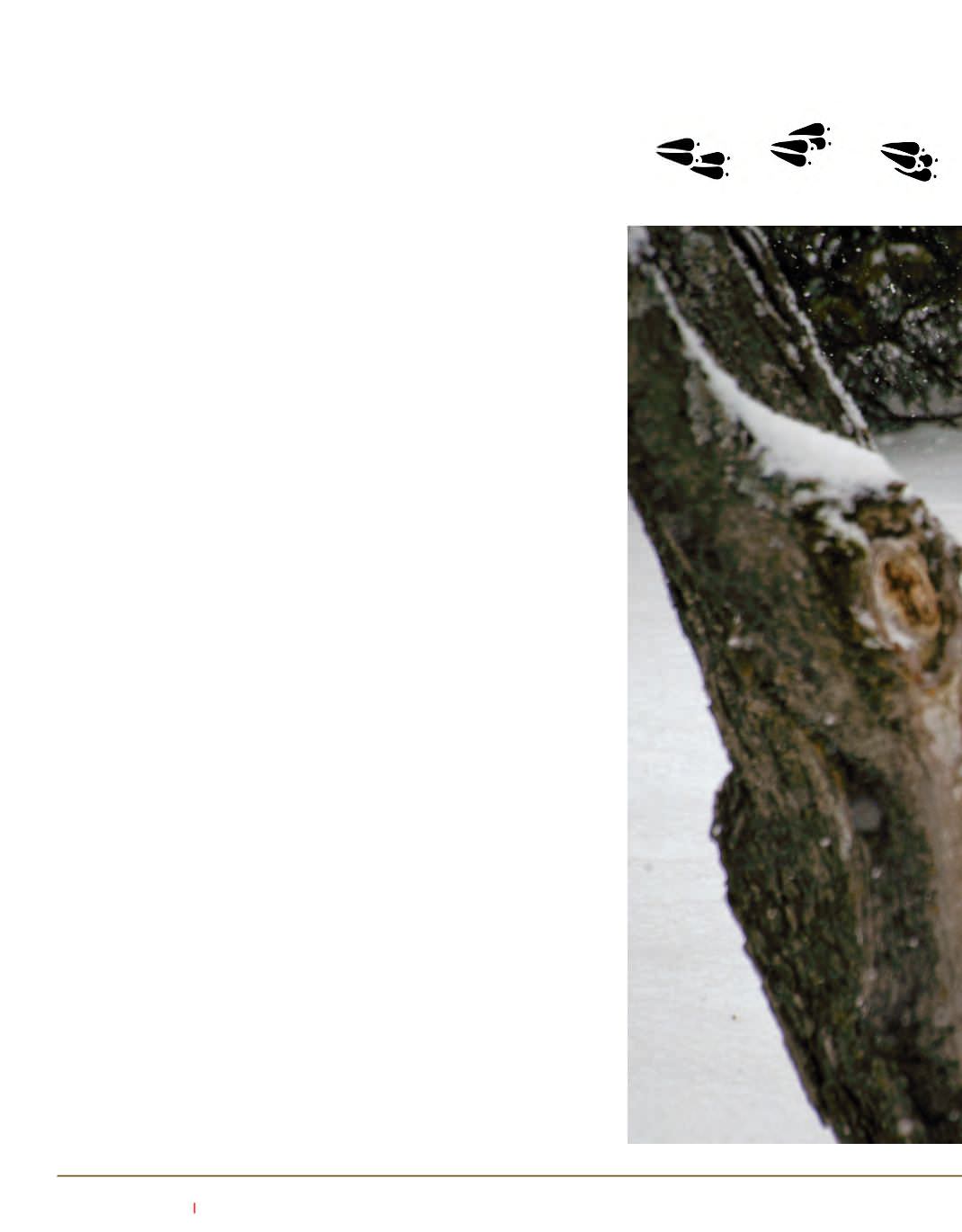
104
Escarpment Magazine Harvest & Holiday 2013
There are 16 recognized subspecies of white-tailed deer in North America. Only three of
these are found in Canada. The northern white-tailed deer is found throughout eastern
Canada, from about the Ontario-Manitoba border eastward to Cape Breton. The brushy
draws (valleys), parklands, and forest fringes of the prairies, westward to the foothills of the
Rockies, are inhabited by the Dakota white-tailed deer. The tawny northwestern white-tailed
deer is found in southeastern British Columbia, occasionally straying down the eastern slopes
of the continental divide into Alberta.
White-tailed deer are relative newcomers to much of the range they now occupy in Canada.
When Europeans first explored the northern half of the continent they found deer in only the
most southerly parts of Canada and this situation had not changed much at Confederation.
At that time there were no deer in Nova Scotia and they were not numerous in New
Brunswick. Deer were in southern Quebec and their range extended some distance down
the St. Lawrence River and up the Ottawa River. Although deer were numerous in southern
Ontario, none had penetrated northward beyond Lake Nipissing. There were a few white-
tailed deer in south-centr al Manitoba, but most of the remainder of the Prairie Provinces was
populated by only the mule deer.
Since then human activities, including the cutting and burning of blocks of forests, the seeding
of agricultural crops, the winter feeding of cattle, the reduction of competitors such as mule
deer, elk, moose, and bison, and the restriction on hunting of white-tails have helped this deer
to extend its range northward and westward. Long-term easing of the severity of winters may
have been an important factor. Whatever the exact combination of causes, the range of the
white-tailed deer extended considerably during the late 19th and the first half of the 20th
centuries. Extension of range and development of substantial populations have been some-
what more recent in Saskatchewan, Alberta, and British Columbia than elsewhere in Canada.
Thus, the current range of most white-tailed deer in Canada represents a marked recent ex-
tension of northern limits. It is not surprising, therefore, that severe winters and changes in
habitats cause marked sporadic declines in population levels through much of the currently
occupied Canadian range. The white-tailed deer shares some parts of its west ern range with
its relations the black-tailed deer and the mule deer.
Feeding...
During the spring and summer the white-tailed deer’s diet consists of leafy material
from a variety of woody plants, grasses, herbs, and forbs. It also includes such delicacies as
fiddleheads, mushrooms, and blueberries. When summer’s lush vegetation turns brown and
dry in autumn, the deer must depend largely on the twigs and buds that are within their reach.
Acorns are a favourite autumn food for white-tailed deer living in eastern Canada, and in
Western Canada grain piles left in fields attract white-tailed deer throughout the autumn and
winter. Even in winter white-tailed deer consume green forage, such as winter-green forbs,
grasses, and sedges.
Even the most favourable winter concentration areas have a limited food supply. If there are
too many deer using the area, the most nutritious fodder disappears rapidly, leaving foods
of only marginal value for the remainder of the winter. Deep snow worsens the problem.
When snow is deeper than 40 cm, deer find it increasingly difficult to move about freely and
tend to follow previously broken trails. The quantity and quality of food that can be reached
from these trails further limit nutritional intake at the very time that intense cold and difficult
travel tend to increase the deer’s energy requirements.
Converting surplus fat stored during the late summer and early autumn meets some of this en-
ergy requirement, but once this remaining source of energy has been depleted, there is less
likelihood of the deer surviving until spring. If food remains scarce and the deer begin to
break down muscle tissue for energy, then the chances of survival become extremely poor.
It is not surprising that those that do survive a severe winter return to their summer ranges as
little more than gaunt shadows of their sleek autumn form. The green growth of spring brings
welcome relief.
*
ESCARPMENT NATURE FEATURE
|
living with white-tails


